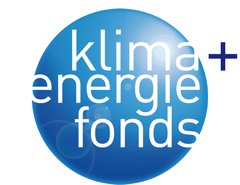
Work Package 4: Revealing the cascade of the energy system and the sources of greenhouse gas emissions
Energy related emissions
Following the mindset for a deepened understanding of our economies as discussed above, functionalities are also at the core of a deepened structural model of the energy system. An operational approach to energy related functionalities is classifying them according to the energy services they are providing:
- energy related functionalities for providing thermal services (at low or high temperatures),
- energy related functionalities for providing mechanical services (stationary engines and mobile engines for transport), and
- energy related functionalities for providing specific electrical services as lighting, electronics and for electro-chemical processes.
These functionalities are closely related to the energy cascade that represents the internal structure of an energy system, i.e. a sequence starting with energy related functionalities. Together with the relevant technologies, the demand for energy related functionalities determines the following energy flows:
- useful energy flows,
- final energy flows, and
- primary energy flows.
In a deepened structural model of the energy system therefore on each level of the energy cascade the relevant technologies for application, transformation and primary energy supply need to be identified. For analyzing radical transformations which are necessary to achieve the goal of decarbonisation a deeper understanding of the internal structures of energy systems is needed. A constituting feature of the internal relationships in an energy system is a layer of cascades, starting from energy related functionalities which we name synonymously energy services. We move on via useful and final energy consumption to primary energy flows. We denote this view of an energy system the “Cascade Structure” approach.
Non-energy related emissions
Like for energy related emissions, functionalities are also at the core of a deepened structural model of non-energy related emissions. The common approach of modelling industrial and agricultural process emissions focuses on the production process (the supply side) but does not explicitly consider the demand side (in the context of ClimTrans2050 the functionality).
For describing the functionality nutrition in Austria (as the main driver for food production), the following information is relevant:
- population in Austria (including specific demographic parameters like age, sex and work),
- amount of consumption of selected types of food per capita,
- shares of domestic production, import and exports of the food types, and
- lifestyles and social factors.
A model suitable for analysing transformation processes has to represent the food cascade and the economic and institutional interdependencies. One step is to select representative types of food for modelling nutrition purposes. The modelling structure needs to capture what amount of which products is needed to cover the functionality, as well as the energy input and the corresponding emissions for the individual production processes of each food type. Total emissions allocated to the functionality nutrition then result from the sum of all these production processes, depending on the system boundaries applied (e.g. distribution or cooling chain may also be assigned to this functionality).




